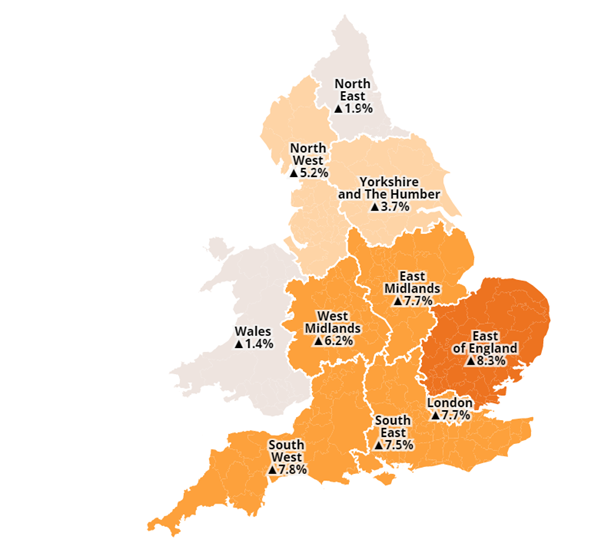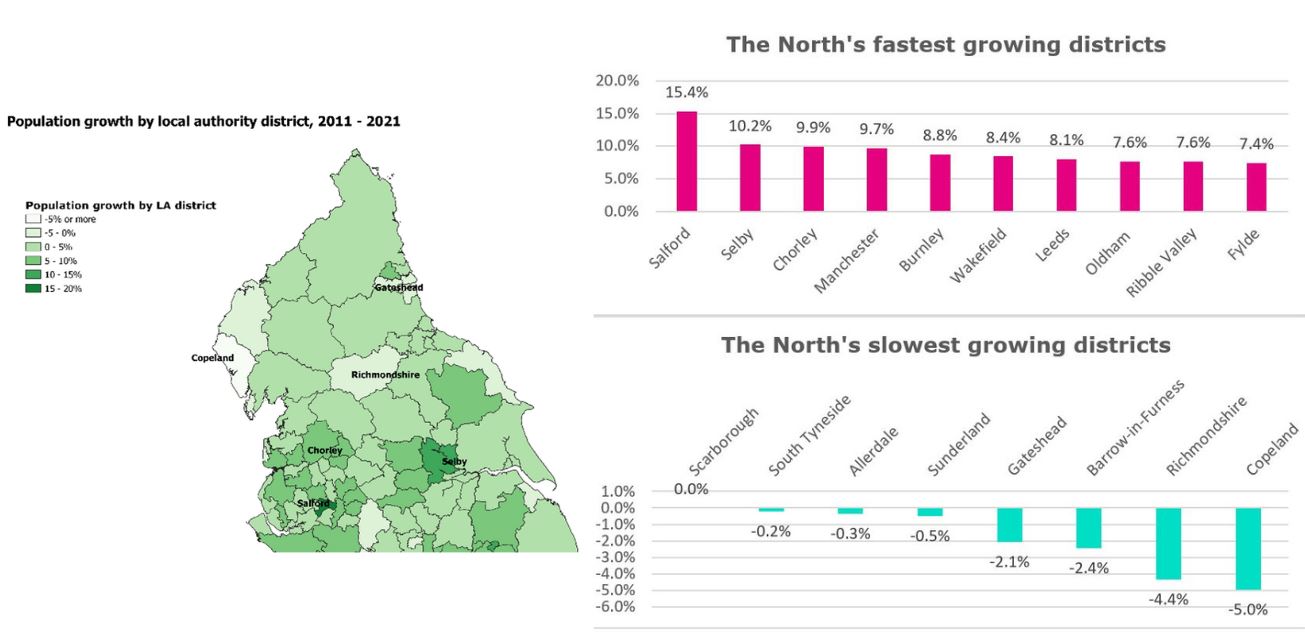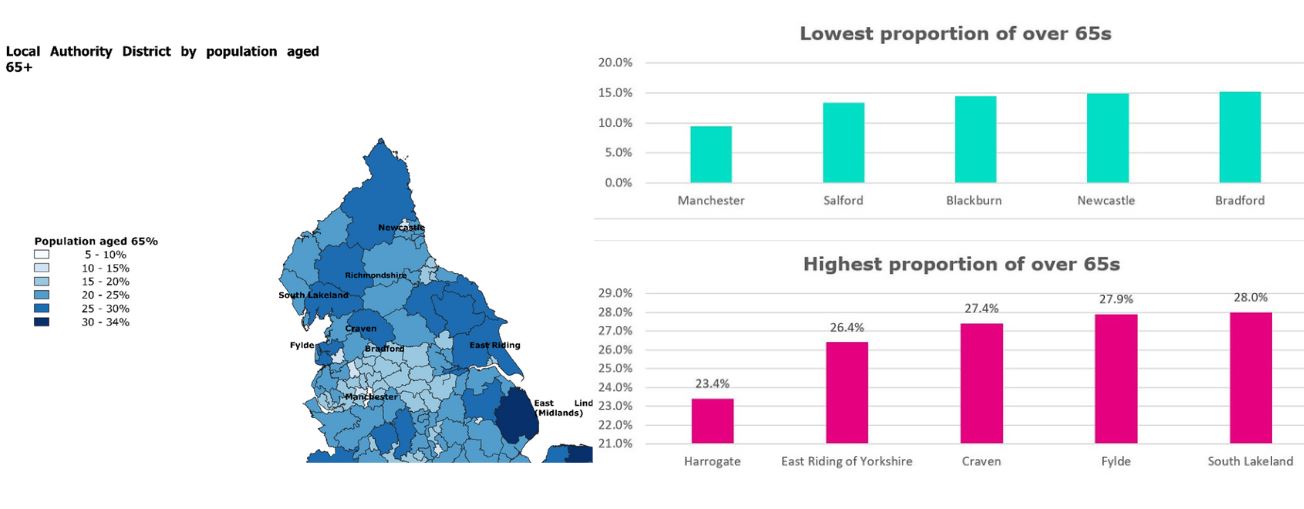Following the recent release of the first population numbers from the Census 2021 results, Jack Ford, Monitoring and Evaluation Officer from our Economics and Research Team, looks at the data and what it means for the North.
The England and Wales 2021 Census shows that whilst there has been population growth across all northern regions since 2011, this growth has been slower than any regions except Wales. However, there is also large variation between places across the North, which will have significant policy implications, including in transport.

Salford has one of the fastest growing populations in the UK, growing at 15.4%. This has been predominantly driven by the expansion of MediaCity and the redevelopment of Salford Quays, which has brought thousands of new homes and well-paying jobs.
Other fast-growing areas include Selby, Chorley, and Wakefield. These areas have seen a spurt of house building in recent years and benefit from proximity to the buoyant job markets of Leeds and Manchester and local jobs in the logistics sector.

On the other end of the scale, the population of seven northern local authorities, including Copeland in Cumbria (-5%) and Richmondshire in North Yorkshire (-4.4%) have shrunk since 2011. In fact, six of the twelve areas outside London with shrinking populations are in the North.
This is partly driven by ageing populations and limited employment opportunities. However, in some of these areas this trend may have been accelerated by the rise of holiday lets and second homes.
There is also significant variation in the age profile across the North. 27.9% of the population of Fylde, Lancashire and 28% of those in South Lakeland are aged 65 or over. However, nowhere in the North makes it to the top ten in the country, which includes the popular retirement destinations of Dorset, North Norfolk and the Isle of Wight.
In contrast, over 65s make up just 13.3% of the population of Salford and 14.9% of Newcastle, reflecting high inward migration of students and young professionals. Overall, though London and the South of England are much more likely to have a younger population profile, reflecting vibrant job markets that draw in both international and internal migration.

All of this poses some important questions for the future of transport in the North of England.
Levelling up
Managing growth